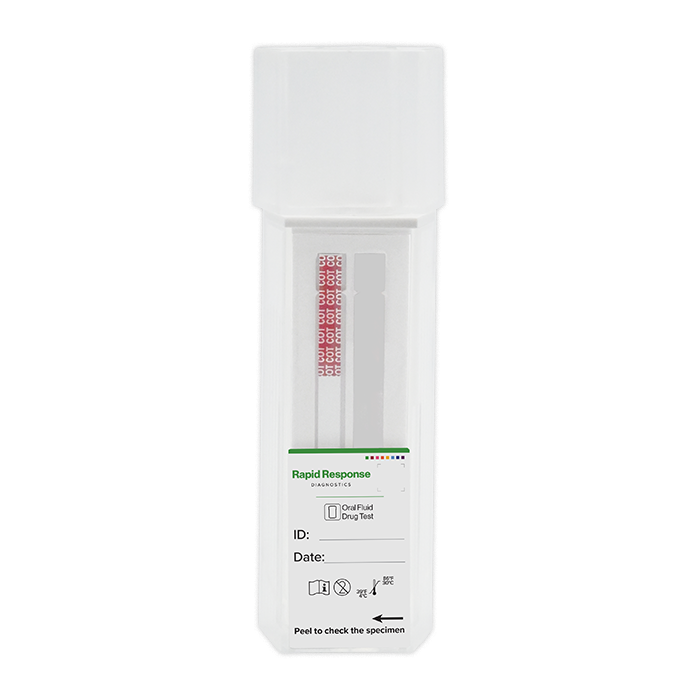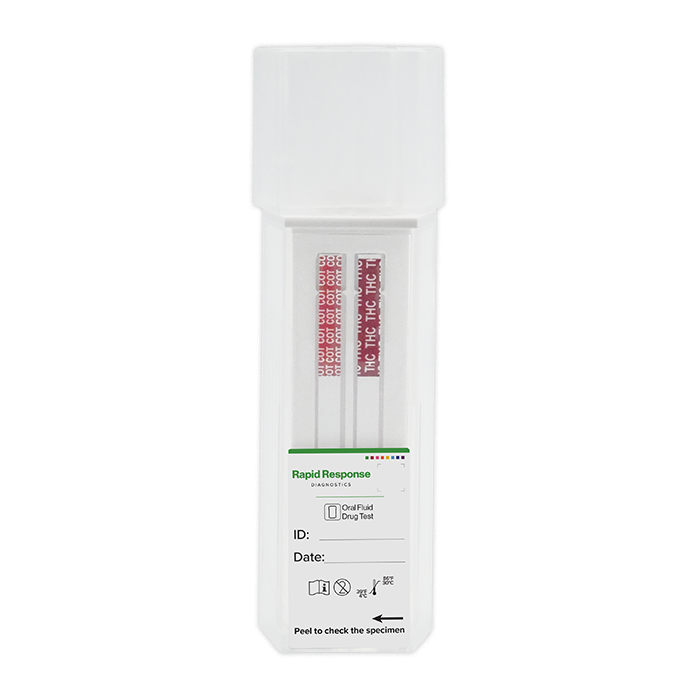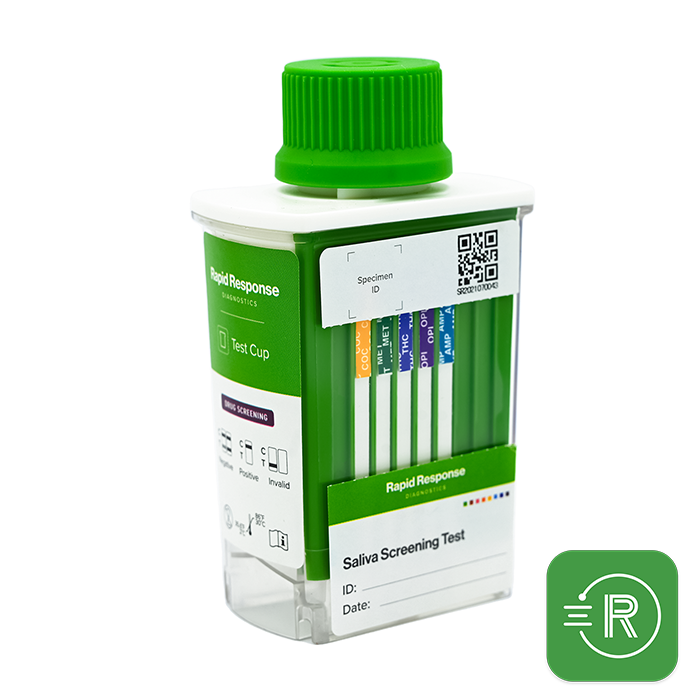Saliva

Drug testing can be important for workplace safety, clinical needs, and personal monitoring. We offer a variety of rapid tests that detect substances in urine or saliva. Each option gives straightforward results, helping you make informed choices with confidence. Our kits focus on reliability and practicality so users can assess substances quickly. From professional settings to personal use, our tests support informed decision-making when it matters. You can find choices for urine or saliva testing; each focused on clear results and peace of mind. Pick the method that fits your exact needs now.
Introduction to Saliva Drug Testing
What is a saliva drug test?
A saliva drug test, also known as an oral fluid test or a mouth swab test, is a procedure that analyzes a sample of saliva to detect the presence of drugs or alcohol.
What is the purpose of a saliva drug test?
The primary purpose of a saliva drug test is to detect the recent use of drugs or alcohol. It is often used by employers for pre-employment screenings, law enforcement officials for roadside checks, and in other situations where drug use is suspected.
- Employment: Employers may require prospective employees to take a drug test before hiring. Some also may conduct periodic or random testing on employees, especially in safety-sensitive positions. Employers may conduct a test post-accident or for a reasonable suspicion of recent drug use.
- Legal or Forensic Reasons: Law enforcement officers may administer saliva drug tests on suspected impaired drivers. Individuals in court cases may also be tested to ensure that they are not using illicit drugs.
- Medical Purposes: Healthcare professionals may use a saliva drug test to diagnose substance abuse disorders or poisoning, monitor drug treatment, or ensure patients are taking prescribed medications.
- Sports: Saliva drug tests may be used for doping control to ensure athletes are not using performance-enhancing drugs or other prohibited substances.
- Rehabilitation and Recovery Programs: Drug treatment programs may use a saliva drug test to monitor an individual.
- Safety Concerns: In safety-sensitive workplace settings, such as in transportation or heavy machinery operation, regular testing may be implemented to ensure that operators are not impaired.
- Self-Testing: Individuals may use over-the-counter drug tests to check themselves or family members, often in the context of recovery or concerns about drug use.
Why is it used?
A saliva drug test is used to obtain visual qualitative results and is intended to assist in the safety, health, and the determination of drug compliance by detecting the presence of specific drugs or alcohol in an individual. It is commonly used for employment screenings, to ensure athletes’ compliance, legal cases, or to monitor patients under medical care.
Saliva drug tests offer a more immediate 24-hour detection window meaning they can detect drugs shortly after they are consumed. This test format is non-invasive and is less intrusive than other sample collection methods. Saliva tests can be directly observed, which makes it difficult to tamper with the sample, and therefore, does not require adulteration testing.
Where is it used?
Saliva drug tests may be conducted on-site such as in workplaces, healthcare settings, sports organizations, legal and at-home settings. These tests are used during pre-employment screenings, roadside testing, post-accident testing, or in any situation where drug use is suspected.
How does it work?
For detailed information on how to use the Rapid Response Multi-Drug Saliva Test Cups, please carefully and thoroughly read the Product Insert that comes with your kit. For a visual guide, watch the demonstration video here.
- Collect sample: The oral fluid samplesample should be collected using the collector provided with the kit. No other collection devices should be used. Sweep the inside of the mouth including cheek, gums, and tongue several times. Then position the sponge of the collector under the tongue and hold it in place for 7 minutes. Apply a slight pressure to the sponge to absorb more saliva sample to help saturate the sponge. The indicator strip will begin to turn red, meaning that the collector is fully saturated. It is recommended that the collector be fully saturated to collect enough samplefor testing.
- Run the test: Remove the saliva collector from the mouth and insert the sponge into the screening device. Screw the cap down tightly until it is locked in place and fully closed. Swirl the screening device to distribute the saliva sample to the wells beneath the test strips. Place the test device upright on a flat surface and wait 10 minutes.
- Read the results: Peel off the label to reveal the results. If the sample tests positive, the individual may be subjected to a second confirmatory test.
Rapid Response Saliva Drug Screening Tests uses advanced nanoparticle technology:
- The test strip membrane is pre-coated with drug-protein conjugates on the test line(s).
- At one end of the test strip membrane, there are drug antibodies conjugated to colored nanoparticles.
- The drug-protein conjugates compete for limited antibody binding sites with drugs which may be present in urine.
In the absence of drug in the saliva, the solution of the colored antibody-nanoparticle conjugate will move along with the urine sample up the strip to the immobilized drug-protein conjugate zone on the test region (T). The antibody-nanoparticle complex then attaches to the drug-protein conjugates to form visible lines.
When the drug is present in the saliva, the drug/metabolite antigen competes with the drug-protein conjugate on the test line region (T) for the limited antibody. When a sufficient concentration of the drug is present, it will fill the limited antibody-nanoparticle conjugate to the drug-protein conjugate zone on the test line region (T). Therefore, absence of the color line on the test region (T) indicates a positive result.
Finding and Taking a Saliva Drug Test
How to get the test?
Rapid Response Saliva Drug Screening Tests can be ordered through a sales representative, by healthcare providers, staffing agencies, or employers on our website who have created an account with us. Contact us for assistance.
Can you take a saliva drug test at home?
Yes, there are saliva home drug test kits options available. Rapid Response Drug Screening Tests provide rapid results and are the top choice for parents or individuals looking to self-test. Contact us.
Detection and Limits
What can a saliva drug test detect?
Saliva drug tests can detect various drugs such as marijuana (THC), cocaine, amphetamines, opiates (e.g., heroin, morphine), and many more. Our Multi-Drug Tests can simultaneously detect multiple drugs all in one step, helping you save time while streamlining your workflow.
Detection Windows
The detection windows for saliva drug tests varies based on the drug. A drug may be detected in saliva in minutes and remain detectable for up to 24 hours post-consumption.
- Marijuana: 1-24 hours
- Cocaine: 1-2 days
- Opiates: Up to 2-3 days
- Methamphetamine: Up to 2 days
Cut-off Values
The cut-off value (usually by ng/mL) is the minimum concentration of a drug required for it to be detected and considered as positive. It ensures minor accidental exposure or other chemically similar substances don’t product a false positive test.
How to Take the Test
Before
Do not place anything in your mouth including food, drink, gum or tobacco products for at least 10 minutes prior to sample collection.
During
Follow the drug test kit instructions carefully. Do not bite, suck, or chew on the collection swab. Wait the recommended time before removing the swab from the mouth.
After
Seal the sample and dispose the used tests after reading the results.
About Test Results
Receiving Results
Test results are readable in 10 minutes. The assay provides only a preliminary analytical test result. A more specific alternative chemical method must be used to obtain a confirmed analytical result. Gas Chromatography/ Mass Spectrometry (GC/MS) or Liquid Chromatography/ Mass Spectrometry (LC/MS) are the preferred confirmatory method. Clinical consideration and professional judgement should be applied to any drug test result, particularly when preliminary positive results are indicated.
Interpreting Results
Drug Test:
A positive result indicates drug residues were found above the cutoff value. Confirmatory tests may be done to validate positive results.
One colored line in the control region (C) means the result is positive. A positive result indicates that the drug or metabolite concentration exceeds the minimum detectable level. Two colored lines, no matter how dark or faint, means the result is negative. A negative result indicates that the drug or metabolite is not present at a detectable level. No line in the control region (C) indicates an invalid test. Invalid test results must be discarded, and the user should repeat with a new test.
The intensity of color in the test region (T) may vary depending on the concentration of analytes present in the sample. Therefore, any shade of color in the test region (T) should be considered negative. Please note that this is a qualitative test only and cannot determine the concentration of analytes in the sample.
Insufficient sample volume, incorrect operating procedure or expired tests are the most likely reasons for control band failure.
Alcohol Test:
No colour change on the alcohol pad (remains white or cream coloured) means the test is negative and that no alcohol is present. If the outer edges of the alcohol pad produce a slight colour but the majority of the pad remains colorless, repeat the test and ensure complete saturation of the alcohol pad. If the result is the same, the result should be interpreted as negative.
A green to blue color change on the alcohol pad means the test is positive. Alcohol 0.02% B.A.C. or higher is interpreted as positive. At higher alcohol concentration near 0.30% Blood Alcohol Concentration (B.A.C.), the colour may change to a dark blue-grey.
Urine vs. Saliva Drug Tests
| Saliva | Urine | |
| Administration | Quick, easy non-invasive, on-site testing, results available in minutes. | Quick, easy, non-invasive, results available in minutes. |
| Detection | Short, immediate detection window. Detect recent drug use. | Longer detection window. Detect previous and some recent drug use. |
| Accuracy | SpecimenSample collection can be monitored and observed. Difficult to adulterate test results. | SpecimenSample collection cannot be monitored. Prone to being tampered with leading to false results. Requires adulteration test strips. |
Drug Screening Urine
- Ease of Use – can detect multiple drugs simultaneously.
- Convenience – requires private settings, such as a restroom.
- Supervision – Privacy concerns can make direct observation intrusive and opens to potential tampering of the test result.
- User Experience – non-invasive method with minimal direct contact with urine.
- Accuracy & Relevance – Longer detection window, between 1 to 3 days, for drugs and metabolites to appear in urine.
- The Rapid Response Multi-Drug Urine Test Cup (Flat) is compatible with our RapidReader App. Learn more.
Drug Screening Saliva
- Ease of Use – can detect multiple drugs simultaneously.
- Convenience – does not require private settings.
- Supervision – Sample collection can be directly observed.
- User Experience – Non-invasive method and comfortable to use.
- Accuracy & Relevance – Saliva drug tests offer a more immediate 24-hour detection window.
- The Rapid Response Multi-Drug Saliva Test Cup is compatible with our RapidReader App. Learn more.
Find the best solution for your needs
Our sales representatives can help set you up for success! Contact our team today!
Invalid results may occur if the strips do not wick. (If applicable) Peel off the label at the bottom of the device as marked to check if either there is enough sample, or to see if the saliva is too thick or viscous to run.
If the strips do not appear to flow when there is enough saliva, or the saliva is too thick to run, shakethe device back and forth several times, keeping the device upright, to immerse the end of the strips in the saliva. Saliva tends to form air bubbles which sit at the bottom of the strip and prevent the strip from running. Gently tap the device on a flat, clean surface to pop the air bubbles, allowing a portion of the saliva sample to flow up the strip.
During sample collection, apply pressure to the sponge and sweep the insides of the mouth to collect as much saliva as possible. Do not bite, suck, or chew on the sponge, as this will damage the test. If the indicator strip has not turned red after 7 minutes with the saliva collector in the mouth, proceed with the test.
Yes, it is important that the donor refrains from placing anything in the mouth including food, beverages, gum, and tobacco for at least 10 minutes prior to sample collection to ensure accuracy.
Saliva drug tests are usually accurate and reliable for detecting recent drug use. However, a presumptive positive test result does not always mean that a person took illegal drugs, and a negative test does not always mean that a person did not take illegal drugs. There are several factors that influence the reliability of the test results. There is a possibility that other substances and/or factors may interfere with the test and cause incorrect test results. The drugs and metabolites will only be detectable for a short period of time after the drugs are consumed.




 Canada
Canada